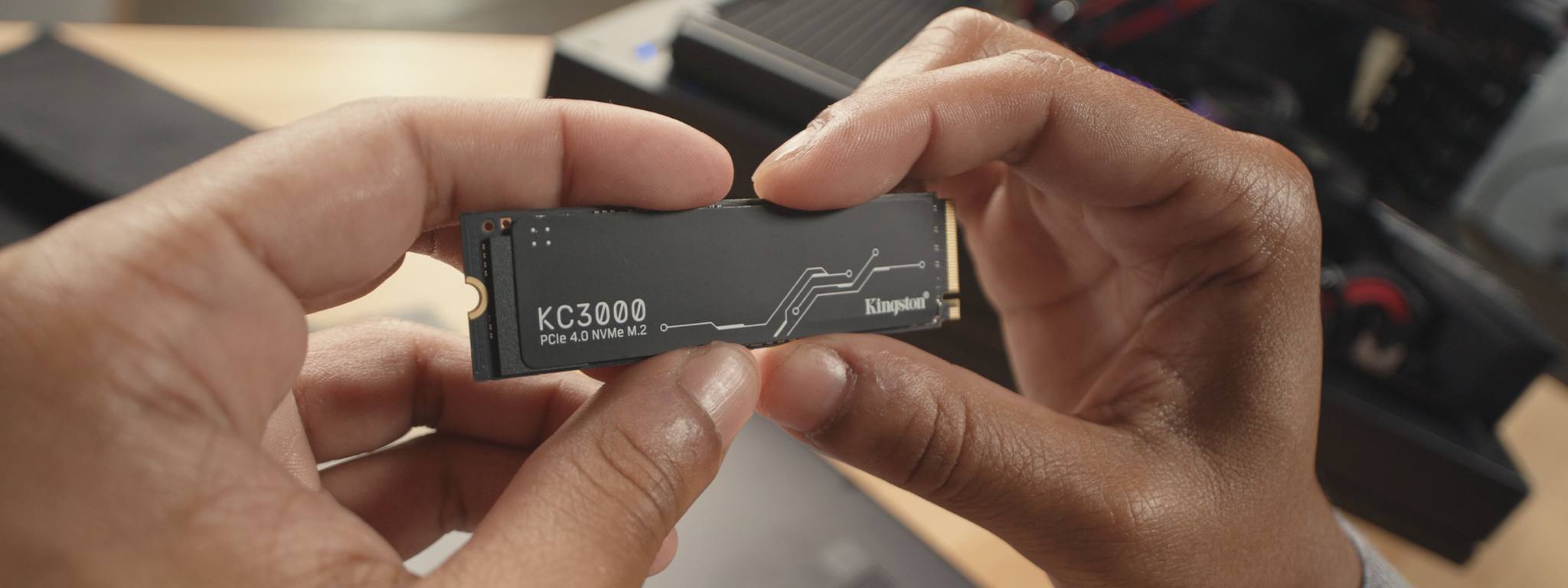Ask a Server SSD Expert
Planning the right solution requires an understanding of your project's storage goals. Let Kingston's experts guide you.



Rafael has spent his career in senior Technology Product, Marketing Communications, and Business Development roles. His advisory practice focuses on the new organizational, product, and communications challenges of technological and regulatory changes, with a central aim of building and preserving revenue streams.
This highly diverse work involves subject matter expertise on information governance and compliance by design, data privacy, and emerging technologies such as AdTech, mobile & 5G, artificial intelligence, and machine learning.
It turns out that where technology standards are concerned, names are important. When the Bluetooth standard arrived, it was branded and marketed to perfection. For the public, it remains one standard no matter the manufacturer, with one name, one logo and one clear benefit—only the more technically-minded care enough to delve deeper into the details. Consumers get clarity and the confidence they are not joining the ignominious ranks of those who purchased Sony Betamax VCRs, Philips Laserdisc players, or Microsoft Zunes.
Of course, NVMe is not the same kind of thing as Bluetooth, and it is difficult to imagine a new standard having the impact that Bluetooth did, or matching the achievement of a widespread, simple understanding of what it does. However, there is an incredibly quiet revolution going on in technology that many consumers find impenetrable, and that is the step change in capabilities delivered via the latest NVMe SSDs.
Even knowing what NVMe stands for is less than helpful because it only reveals more technical terminology—‘non-volatile’ sounds good, but why does this matter and why should the potential customer even care?
The answer to that is refreshingly simple: Client NVMe storage is faster than any storage you currently know, runs silent, and has a form factor about the size of a stick of chewing gum. It can fit inside small devices and instantly give them the ability to perform to their maximum potential. This is the revolution that does not actually revolve, because there are no moving parts!
I have addressed before how storage and memory are key to the new digital experiences of the 2020s. This boils down to the fact that you can have the fastest processor imaginable yet be unable to tap into that power because of bottlenecks in the device’s internal architecture. NVMe drives—especially the newest drives that take fullest advantage of the newest generation standard—simply blow everything else out of the water.
There are some simple reasons why NVMe is different that I would like to outline, but first let us establish what typical use cases for choosing NVMe might be:

At the edge, ‘power users’ of high-performance workstations who deal with the most demanding computational tasks, such as 4K video post-production or rendering 3D graphics with ray tracing. To get smooth performance and speedy renders while editing and processing video images, you need to move massive amounts of uncompressed data around. These processes can be held up by many factors—insufficient RAM for example—but also these computational tasks are becoming too much for a spinning hard drive to handle, and with the exponential growth in data volumes, even a traditional Solid-State Drive (SSD) will struggle.
Essentially, the performance bottleneck is not necessarily the fact that the device is solid-state—after all, NVMe drives are themselves SSDs—but the limits of the interface that sits between the SSD and the CPU. This goes back to how computers evolved—drives were plugged in via a cable, with a gradual evolution of the capability of an interface, from the old RS-232 interface, through SCSI and, latterly, the SATA standard. NVMe takes a different approach. It might even be described as nitrous oxide for the CPU.
The new generation of NVMe drives uses the PCIe 4.0 standard to read, write and move data around. This standard has data throughput bandwidth that is several times that of even the fastest SATA drives. SATA tops out at about 6Gb per second—pretty good, but NVMe can achieve up to 32Gb per second. This is because of many factors but the easiest to understand is that NVMe simply has more ‘lanes’ through which to move data. NVMe is also designed to integrate better with the networks that underpin today’s computing infrastructure.
NVMe SSDs are designed to be more of an integrated part of the fabric of an IT network. NVMe functions with more direct integration into the computer’s CPU. This avoids data bottlenecks that happen even with the fastest SATA SSDs when pushed to the limit. The form factor of client NVMe devices is crucial as well—they are about the size of a stick of chewing gum, meaning they can fit in small devices like laptops. You might not know it, but even the Sony PlayStation 5 runs NVMe, meaning loading times on the console can drop from 40-60 seconds for the PS4 down to around 3 or 4 seconds.

Secondly, we need only look at the massive upsurge in the global demand on data centers. Computation in the cloud powers much of our daily lives. This was happening at pace anyway, but COVID-19 proved to be the catalyst for the digitization and virtualization of offices and the absolute rule of the mobile device. What is more, the kinds of computational tasks taking place in data centers are ever more complex and demanding.
Artificial Intelligence, for example, is a term that covers a wide range of computational tasks, and many of these rely on machine learning. What AI computational modes have in common is that they all leverage massive amounts of data to function. Here again, NVMe is the technology that makes a significant difference when it comes to getting things done swiftly and seamlessly.
For example, let's consider what is going on in the healthcare industry vertical, not only the fact that medicine is now a digital domain. AI-assisted diagnostics and predictive algorithms need to deal with the analysis of millions of records—and each individual record might be something like a very high-resolution digital image that is gigabytes in size. Pushing all this data around involves computation that is unlike any cognitive process that a human might recognize—this is artificial intelligence, after all—and this demands massive data bandwidth.
At the industrial scale of a data center, NVMe can do the job—silently, at low temperatures, and taking up minimum space.
Here is where it can be less than simple—some non-NVMe SSDs can plug into the same slot as an NVMe drive, but still not deliver NVMe performance. This is because the connector—known as an ‘M.2’ connector, for those who still require more technical terminology and acronyms—is backward compatible with SATA SSDs that have the same ‘chewing gum’ form factor.
Unsurprisingly, Kingston Technology has a range of NVMe SSDs that will fit the bill. If you wanted to give your laptop a stunning boost in storage capacity and capability, you are looking specifically for something like Kingston’s KC3000 NVMe SSD. It's so simple that in a matter of minutes, your laptop could benefit from up to 4 terabytes of NVMe storage that is also so blazing fast that it will feel like a different computer.
Secondly, if you are a CTO or IT manager, making long-term technology choices is part of the job—and where the enterprise-level server is concerned, having an extremely fast boot drive is key, such as Kingston’s DC2000B SSD that has been engineered specifically for this task.
NVMe might not be a catchy name, but its capabilities should make us all sit up and take notice.
#KingstonIsWithYou

Planning the right solution requires an understanding of your project's storage goals. Let Kingston's experts guide you.
When you start with Kingston, choosing memory is easy.
With over 35 years of expertise, Kingston has the knowledge and resources you need to choose memory with confidence.
Simply enter the make and model number or system part number of the computer system or digital device to find the Kingston products you need.
Search by either the Kingston part number, distributor part number or manufacturer equivalent part number.